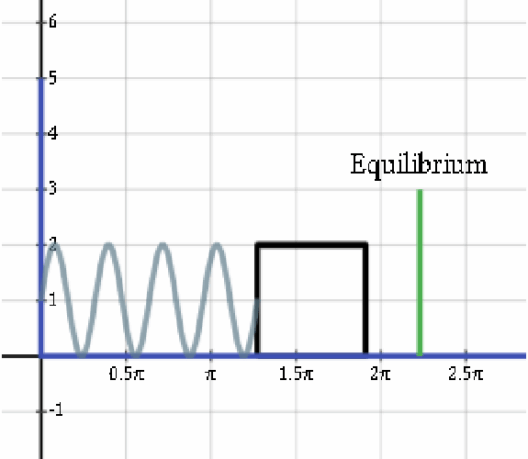As we delve into the pressing issue of dead zones emerging due to global warming, one might ask: What if the oceans, our planet’s life-giving blue arteries, become inhospitable to marine life? This playful inquiry masks a foreboding reality that scientists and environmentalists alike are grappling with. Oceanic dead zones are increasing rapidly, presenting a dire challenge that not only threatens aquatic ecosystems but also heralds consequences for global food security and economic stability.
Dead zones, scientifically referred to as hypoxic areas, arise when dissolved oxygen levels in the water plummet to a point that cannot support most marine life. Oxygen depletion is predominantly due to anthropogenic factors, including nutrient pollution from agricultural runoff, sewage discharges, and fossil fuel combustion. This influx of nutrients, especially nitrogen and phosphorus, triggers algal blooms that consume oxygen as they decompose, ultimately leading to the formation of these lethally hypoxic regions.
The phenomenon has gained alarming momentum over the past few decades. A striking statistic reveals that the number of dead zones has escalated from approximately 49 in the 1960s to over 400 today, affecting many coastal ecosystems on every continent except Antarctica. The Gulf of Mexico, for instance, hosts one of the largest such areas, severely impacting the fishing industry that thrives on the diverse aquatic populations of the region.
In exploring the implications of rising dead zones, one must consider the myriad ecosystems at stake. Marine habitats, such as coral reefs and estuaries, serve as nurseries for countless species. As oxygen levels dwindle, these vital environments become uninhabitable for fundamental organisms, consequently disrupting intricate food webs. For instance, larger marine fauna, such as fish and marine mammals, face perilous exists when their prey, often the smaller or juvenile species, diminish in number or relocate to more oxygen-rich areas.
The economic ramifications are equally disconcerting. Fisheries are heavily reliant on healthy ecosystems. The collapse of local fish populations due to dead zones forces communities to adapt, often leading to increased unemployment and food shortages. Additionally, the tourism industry, which thrives on vibrant marine life, reports declining revenues as coral reefs face bleaching and fish populations dwindle. The cyclical nature of this challenge amplifies concerns surrounding oceanic health, human wellbeing, and economic viability.
As the climate crisis intensifies, it emerges as a key driver exacerbating the dead zone phenomenon. Rising global temperatures not only elevate water temperatures but also alter rainfall patterns, leading to increased runoff of nutrients into oceans. Warmer waters promote more frequent algal blooms, ushering in a vicious cycle that further depletes oxygen levels. This interlinked relationship is a poignant reminder of how climate change ramifications ripple through various ecosystems, underscoring the urgency for cohesive and robust climate action.
Moreover, dead zones do not adhere to geopolitical boundaries. Noxious influences spanning borders complicate international efforts aimed at mitigating the crisis. Countries reliant on shared water bodies must collaborate to establish sustainable agricultural practices, fortify wastewater management systems, and reduce fossil fuel dependency. Building a collective strategy necessitates that governments engage in meaningful dialogue, prioritizing both environmental integrity and economic sustainability.
Public awareness and education play a critical role in confronting the challenge of rising dead zones. Citizen understanding of the integral connections between everyday activities and ocean health can inspire grassroots movements advocating for change. Simple acts—such as adopting sustainable farming practices, minimizing plastic usage, and supporting local fisheries—can significantly alleviate the strain on marine ecosystems. Furthermore, integrating comprehensive environmental education into curricula will empower future generations to become conscious stewards of their surroundings.
The scientific community continues to investigate solutions to this pressing issue. Innovative approaches can include the development of environmentally friendly fertilizers that minimize nutrient runoff or restoration efforts to revive marine habitats such as wetlands and mangroves. These natural buffers serve to absorb excess nutrients before they reach our oceans. Additionally, enhancing predictive models to monitor algal bloom structures can assist in developing timely response strategies to protect marine environments.
As we attempt to respond to the multifaceted problem of dead zones, it is essential first to recognize our interconnectedness. Every individual action, no matter how microscopic, contributes to broader environmental outcomes. By fostering a sense of responsibility towards the oceans, people can engage in transformative initiatives that counter the chilling impact of global warming on marine life.
In conclusion, the rising phenomenon of ocean dead zones reflects a chilling reality driven by climate change, anthropogenic influences, and neglect for sustainable practices. It represents a formidable challenge that tests our collective resolve to safeguard marine ecosystems and maintain economic stability. Only through concerted effort and unwavering commitment to enact meaningful change can we hope to reverse the tide of destruction plaguing our oceans. The question remains: will we rise to the challenge and empower ourselves to become advocates for a thriving marine future?








